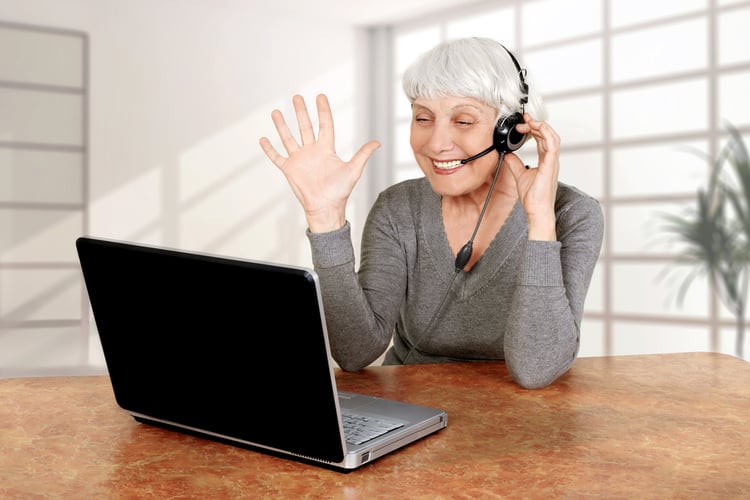- HOME
- SERVICES
- WHERE TO BEGIN
- LOCATIONS
- RESOURCES
- HEALTH PLAN SERVICES
- CAREERS
- EMPLOYEES

Tips for Long-Distance Caregivers
Long-distance caregiving can be very emotionally stressful. Not only can the miles between caregivers and the person whose care they’re managing leave them feeling disconnected, but the experience of caregiving can leave some feeling isolated, as if they’re doing it alone.
As the National Institute on Aging (NIA) notes, “If you are a long-distance caregiver, you are definitely not alone. There may be as many as 7 million people in your same situation in the United States.”
Millions of caregivers face the challenge of helping someone they care about enjoy a high quality of life from afar. Trying to ensure that healthy eating, home maintenance and healthcare coordination are all happening can be daunting and quite difficult.
The Mayo Clinic advises long-distance caregivers to study any existing conditions their friend or family member may be facing. Know the challenges and treatment options. (The resources of Premier Home Health Care Services, Inc. can help. These include our blog, featuring articles on a variety of conditions and ways to manage them with home health care, as well as additional resources for the “Sandwich Generation.”)
Once caregivers have familiarized themselves with conditions and treatments, informed conversations can take place among doctors, specialists and members of the healthcare team to determine a care plan. But how can a long-distance caregiver ensure that the plan is being followed? Are medications being taken, therapies followed and appointments kept? Are basic day-to-day things being done, such as upkeep of the house?
There are clear signs to watch out for that we outline in How to Start the Home Health Care Conversation in Your Family – when caregivers are able to check in on their loved ones in person. But how can you monitor from a distance?
The NIA offers a tip for gaining insights over the phone. “Uncle Simon might not want to worry his nephew, Brad, who lives a few hours away, or he might not want to admit that he’s often too tired to cook an entire meal. But how can Brad know this? If he calls at dinner and asks ‘what’s cooking,’ Brad might get a sense that dinner is a bowl of cereal.”

We also recommend that when you are able to visit, set up video calls via services such as FaceTime or Skype, so future conversations can offer a peek into how the other person on the line is doing. Establish a pattern of emailing each other a “selfie” a day while doing something fun to get a glimpse of how they’re spending their day.
It may become clear that it’s time for help. A home health care aide, for example, can prepare nutritious and delicious meals. Premier Home Health Care, for example, can provide transportation to doctor appointments, health services and adult day care. Our team of specialists can manage diverse conditions that include diabetes, Alzheimer’s and heart disease.
Whether the choice is for part-time care or live-in care, long-distance caregivers and home health care teams can improve overall well-being when they work together. For more information about how Premier Home Health Care can help, please call 1-866-648-5119.
